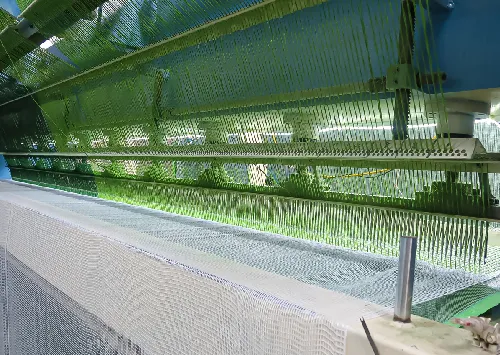
- Afrikaans
- Arabic
- Belarusian
- Bengali
- Czech
- Danish
- Dutch
- English
- Esperanto
- Estonian
- Finnish
- French
- German
- Greek
- Hindi
- Hungarian
- Icelandic
- Indonesian
- irish
- Italian
- Japanese
- kazakh
- Rwandese
- Korean
- Kyrgyz
- Lao
- Latin
- Latvian
- Malay
- Mongolian
- Myanmar
- Norwegian
- Persian
- Polish
- Portuguese
- Romanian
- Russian
- Serbian
- Spanish
- Swedish
- Tagalog
- Tajik
- Thai
- Turkish
- Turkmen
- Ukrainian
- Urdu
- Uighur
- Uzbek
- Vietnamese
fake football pitch
Nov . 15, 2024 17:32 Back to list
The Allure of the Fake Football Pitch A New Era of Play
In recent years, the landscape of football has undergone dramatic transformations. One of the most significant changes has been the emergence of artificial surfaces, commonly referred to as fake football pitches. These synthetic fields have sparked debate among players, coaches, and enthusiasts regarding their advantages and disadvantages, as they play a pivotal role in the evolution of modern football.
The origin of artificial turf dates back to the 1960s when the first synthetic grass was installed at the Astrodome in Houston, Texas. Initially developed to provide a durable, all-weather alternative to natural grass, today's fake pitches have evolved significantly in quality and performance. Modern artificial turf systems, often made with polyethylene or polypropylene fibers, mimic the appearance and feel of natural grass while providing a consistent playing surface year-round.
One of the most significant advantages of fake football pitches is their durability
. Unlike natural grass, which can suffer from wear and tear due to foot traffic and adverse weather conditions, synthetic pitches maintain their quality regardless of usage. This reliability allows for increased playtime, which is particularly beneficial for youth leagues and community clubs that often face scheduling challenges due to weather or field conditions. A synthetic pitch can endure heavy play without the need for frequent renovations, ensuring that teams can practice and compete without interruptions.Furthermore, maintenance of artificial surfaces is considerably less demanding compared to natural grass. Traditional grass pitches require regular mowing, watering, fertilizing, and pest control, which can be time-consuming and costly. In contrast, fake pitches need only occasional brushing and infill replenishment. This reduced maintenance burden translates to lower operational costs for clubs and organizations, enabling them to allocate funds towards improving other aspects of the game.
fake football pitch

However, while fake football pitches offer tangible benefits, they are not without controversy. Many purists argue that artificial surfaces can alter the way the game is played, potentially impacting player performance and safety. The elasticity and composition of synthetic grass can lead to different ball behavior, changing the dynamics of passing, shooting, and dribbling. Critics express concerns over increased injury risks, particularly related to the hard surface and heat retention in warmer weather, which can lead to conditions like turf toe and other impact-related injuries.
Additionally, the environmental implications of synthetic pitches cannot be overlooked. The production and disposal of artificial turf raise concerns regarding sustainability. Many synthetic fields are made from non-biodegradable materials that might take years to decompose. Furthermore, there is growing awareness of the microplastics released into the environment from worn-out turf. As advocates for environmental responsibility call for greener alternatives, the debate continues about the long-term impact of fake pitches on the planet.
Despite these concerns, the popularity of synthetic football pitches continues to rise, particularly in areas where natural grass is difficult to sustain. Many clubs and schools are taking advantage of their benefits, recognizing that the ability to provide a consistent and reliable surface for training and competition outweighs some of the drawbacks. Major tournaments have started to embrace artificial surfaces, and FIFA has even developed specific standards for their use, ensuring that matches played on fake pitches maintain a high level of quality.
As technology progresses, we can expect further advancements in artificial turf design, including materials that better replicate the natural feel of grass and address concerns related to player safety and environmental impact. Future innovations may lead to hybrid systems that combine the benefits of both natural and synthetic surfaces, offering players the best of both worlds.
In conclusion, fake football pitches have become a defining feature of modern football, shaping not only the way the game is played but also how clubs and communities engage with the sport. As the dialogue surrounding their use continues to evolve, it is clear that synthetic surfaces will play a significant role in the future of football, pushing the boundaries of performance and accessibility in an ever-changing athletic landscape. The key will be finding the balance between innovation and tradition, ensuring that the beautiful game remains true to its roots while embracing new possibilities.
-
The Benefits of Artificial Turf for Indoors
NewsJul.15,2025
-
How Artificial Grass Suppliers Ensure Quality Products
NewsJul.15,2025
-
Artificial Grass and Pets: A Space for Relaxation
NewsJul.08,2025
-
Balcony & Outdoor Decoration with Artificial Grass
NewsJul.08,2025
-
Best Indoor Artificial Grass for Home
NewsJul.07,2025
-
Best Pet Turf for Dogs: Safe & Durable Artificial Grass Options
NewsJul.07,2025
Products categories









